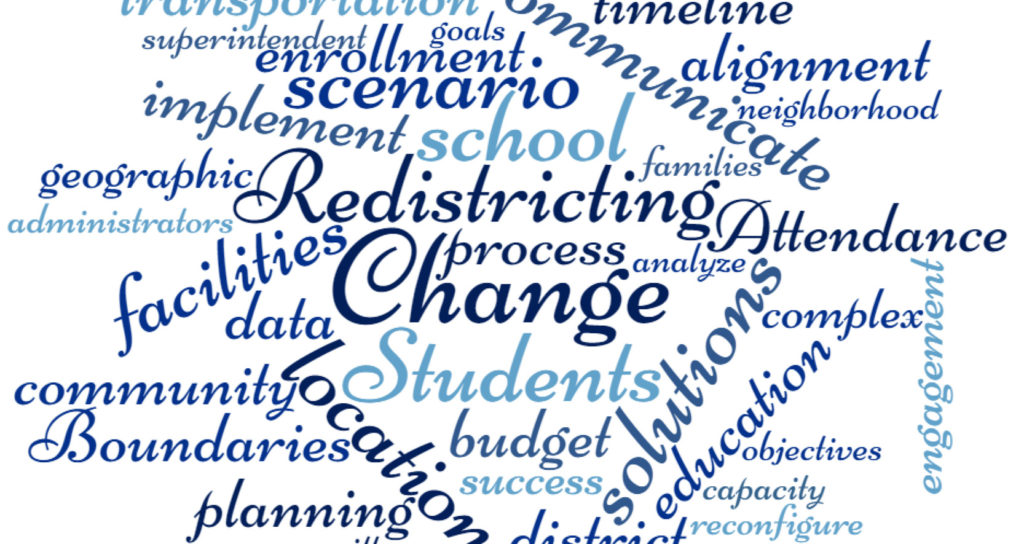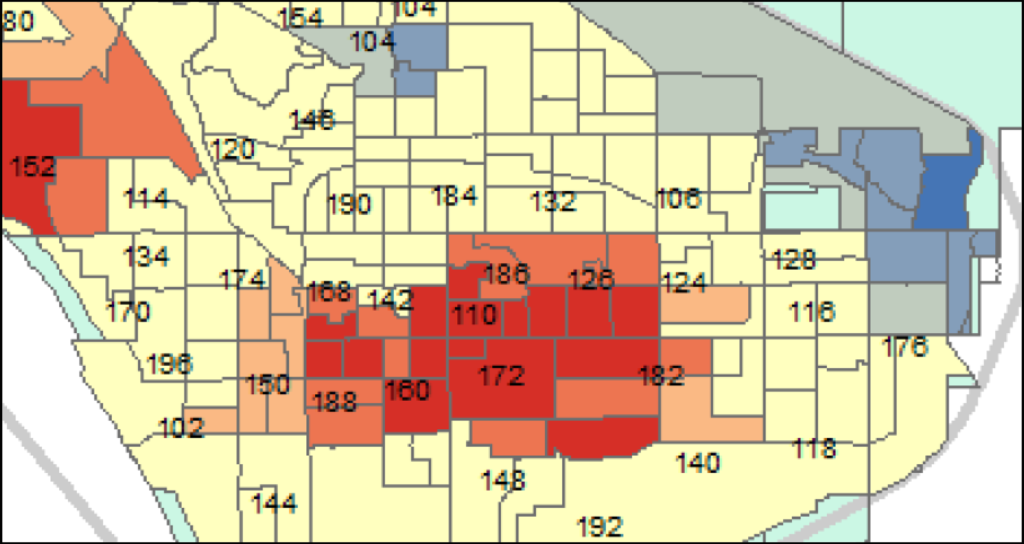Natural and manmade disasters create the need for school districts to have plans in place to understand their risks, respond to emergencies, and resume normal activities as soon as possible1. Geographic information systems (GIS) software can be an important resource for disaster planning and response teams.
[GIS] is a computer system for capturing, storing, checking, and displaying data related to positions on Earth’s surface. By relating seemingly unrelated data, GIS can help individuals and organizations better understand spatial patterns and relationships.2
For school districts, investment in a GIS application provides multiple benefits with respect to disaster planning and response.
Accurate district maps. A GIS application helps maintain accurate maps of district boundaries and building locations. The maps can be shared with city or county personnel to coordinate disaster planning. A FEMA article notes that during a disaster, “Timely, accurate information displayed on a map has always been useful to emergency responders.”3 An accurate map is also useful after a disaster when the district needs to send crews to evaluate potentially damaged sites.4
Understand proximity to hazards. A GIS application can store accurate data about school building proximity to natural disaster hazards such as streams or rivers, coast or fault lines, train tracks, chemical plants, and petroleum pipelines. Location is central to understanding risk,5 and the same GIS software can store and display estimates of risk from potential hazards. The combination of proximity information with data on vulnerability or risk can yield insights about where disaster is more likely to strike.
Identify affected students and families. GIS software can be used to identify and locate students and families affected by disaster in one or more areas of the school district. A disaster can include an outbreak of disease or a pandemic, and quickly identifying exposed students is an important part of a rapid and effective response.
The power of GIS is that the application can combine geographic data with demographic data, and the combination can produce useful insights for emergency planning.6 Susan Cutter, a geography professor at the University of South Carolina maintains that, “Knowing about the landscape of…social vulnerability helps to identify which populations may need assistance in preparing for, responding to and recovering from events.”7
Evaluate capacity to reassign affected students.If one or more of your buildings is unusable after a disaster, or if you need to help accommodate students from a neighboring district, you will need information about where you have capacity to reassign students. A GIS application can tie school building capacity information to student location data to help make the reassignment process as smooth as possible. The GIS application also makes it possible to share standardized and accurate information with multiple departments, for example student services, transportation and finance.
When a disaster hits an area or the school district itself, the superintendent and district leaders are central to the response. Anticipating potential risks, planning ahead, having reliable and up-to-date data and maps, and coordinating with other authorities are all essential to a rapid and successful recovery.
Footnotes
1) See for example, Emily Brown, Natural disasters drive need to update K12 emergency plans, January 17, 2019. https://districtadministration.com/natural-disasters-drive-need-to-update-k12-emergency-plans/
2) https://www.nationalgeographic.org/encyclopedia/geographic-information-system-gis/
3) https://www.fema.gov/blog/2013-06-07/big-picture-role-mapping-assessing-disaster-damages
4) https://www.edweek.org/ew/articles/2017/11/29/8-tips-to-prepare-schools-for-potential.html
6) Nate Haskin, Beyond the Map: Building Competitive Advantage Through Leveraging Geospatial Data, CIOReview, Nov., 2018, p.8. https://magazine.cioreview.com/magazines/November2018/GIS/.
7) Quoted in Eric Holdeman, Nov 5., 2014, “How GIS Can Aid Emergency Management” https://www.govtech.com/em/disaster/How-GIS-Can-Aid-Emergency-Management.html





